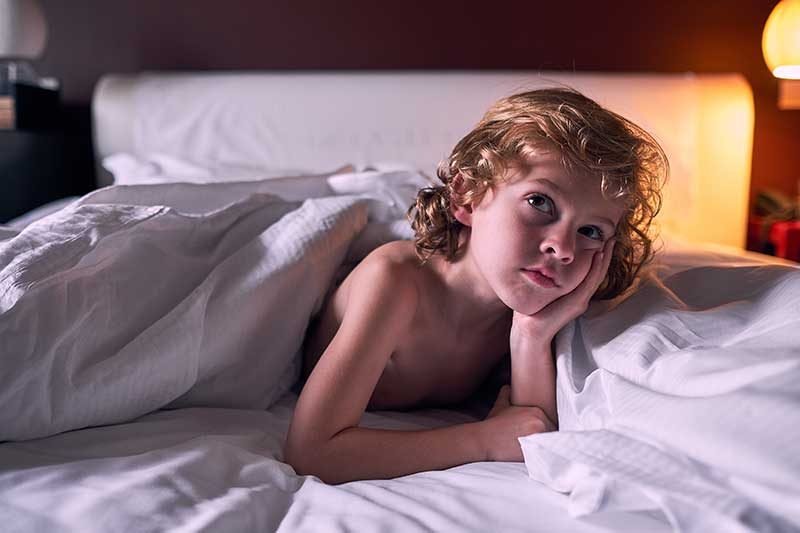While the night is typically a time for rejuvenation and slumber, certain children may experience excessive perspiration during this period. Observing your child suffer from nocturnal sweats can be a source of concern for a parent. For your peace of mind and your child’s health, it is vital that you comprehend the potential causes and when to consult a physician.
Define night sweats
Pediatric night sweats occur when a child perspires excessively while sleeping, resulting in wet undergarments and linens. Even if the infant is not overdressed and the room temperature is cool, this may still transpire.
Anterior to Anterior Sweating
- Normal Perspiration: The result of an overly heated environment or an excess of bed linens.
- Persistent and excessive perspiration that is not caused by external factors constitutes abnormal sweating.
- Possible Aetiologies of Night Sweats in Children Night sweats may indicate an underlying medical condition or be harmless in nature.
Innocent Causes
- The cause of overheating is a warm slumber environment.
- Engaging in vigorous physical activity prior to retiring for the night is active play.
- Early development: Due to the fact that their bodies are still learning to regulate temperature, younger children may perspire more.
Critical Causes
- Infections include tuberculosis and various bacterial and viral infections.
- Disorders pertaining to the regulation of hormones, including hyperthyroidism and diabetes.
- Rare neurological disorders have the potential to impact the perspiration mechanism of the body.
- Respiratory complications, such as sleep apnea, manifest as sleep disturbances and excessive perspiration.
- Certain medications used to treat ADHD or psychiatric disorders may induce perspiration.
Recognition of Severe Signs
- Nighttime perspiration that is frequent and persistent.
- Fever, unexplained weight loss, or a persistent cough are accompanying symptoms.
- Behavioral Alterations: alterations in appetite, lethargy, or irritability.
- Familial History: Knowledge of hereditary disorders.
Assessment and Treatment
If severe symptoms are detected, it is imperative to consult a pediatrician. The diagnostic procedure might comprise:
Diagnostic Procedures
- Exhaustive medical history, encompassing familial medical background.
- Physical Examination: To identify any indications of disease.
- Laboratory examinations may include urine and blood analyses, as well as hormone level monitoring.
- Imaging studies, such as X-rays or MRIs, are utilized when a structural issue is suspected.
- Sleep studies are particularly important in cases where sleep disorders are suspected.
Treatment Methodologies
Contingent on the underlying cause, treatment may consist of lifestyle modifications, medication, or other interventions tailored to the diagnosed condition.
Rational Advice for Guardians
- Enhance the Sleeping Environment by: Ensure adequate ventilation and temperature in the chamber.
- Appropriate linens and Clothing: For pajamas and linens, utilize breathable materials.
- Evening Routine: Vigorous activities should be avoided nearby of nighttime.
- It is crucial to consume sufficient water, particularly in humid regions.
Night perspiration in children can range from a harmless condition to an indication of a serious medical condition. It is vital to recognize the indicators that distinguish normal perspiration from possible health issues. It is prudent to consult a healthcare provider whenever certainties are uncertain.
